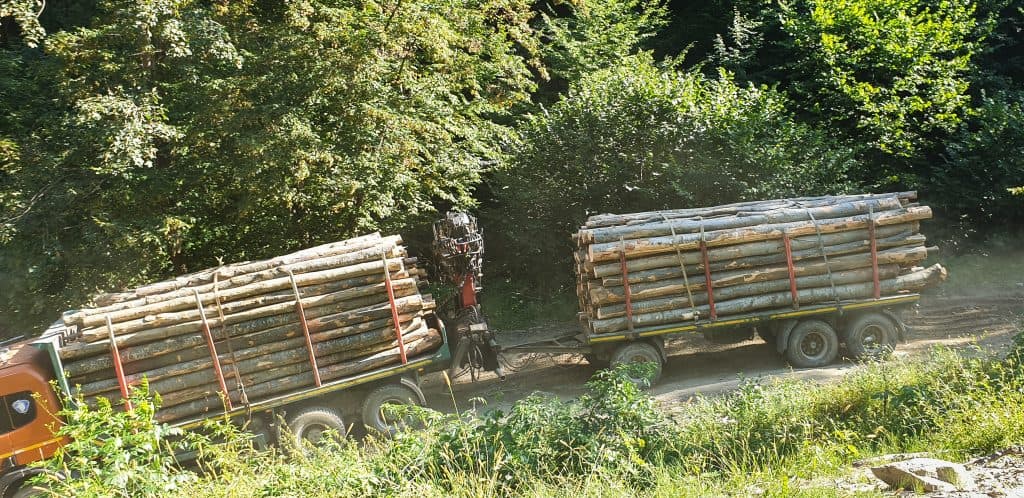A third of the monitored timber transports are illegal and approximately 26% of the transports registered in SUMAL 2.0 are non-compliant, two WWF monitoring reports reveal.
The first is a video monitoring report made for the third year in a row which, even though it is not statistically relevant at a national level, shows clearly that the main method used to introduce illegally harvested timber into the market is „overloading” – that is fake statements regarding the quantities of transported timber. Approximately 1 in 5 transports registered in SUMAL are overloaded by more than 20% of the volume declared. Even more, half of the illegal transports, which do not comply with the regulation regarding the origin, movement and marketing of timber products, are not even registered in SUMAL.
The second report is a simple office analysis in which we looked at the data operators must introduce into the “Forest Inspector” public platform. We found out that the photos timber transporters upload to SUMAL are often inconclusive and “fool” the system, which it is not designed to check them.
These are real-life problems which the draft of the new Forestry Code project should take into account in order to be efficient. Unfortunately, its first version doesn’t include the administrative reforms that are so necessary to the Romanian forestry. Instead, one can find a series of important slippages from the sustainable forest management principles.
"We are stuck with the same inefficient illegal logging system, where we will continue to see rangers attacked by wood thieves, local communities deprived of access to the resources they depend on and a suffocating bureaucracy that reveals the bankruptcy of the entire forestry sector. Moreover, we risk being left with fewer forests, witnessing a logging liberalization, starting a new wave of "appropriation" of the state's forests and abandoning the responsible practices that ensure good protection of the environment and of biodiversity conservation.”
Radu Vlad, manager of the forestry programs at WWF Romania
The Forestry Code should, therefore, establish rules that can be easily monitored, produce conclusive evidence in court and that, above all, eliminate systemic conflicts of interest. Field controls should target critical areas of the timber custody chain, where there are the highest risks of illegally harvested timber being introduced into the market. Implementing the digital footprint of timber transports would solve most of these problems.

